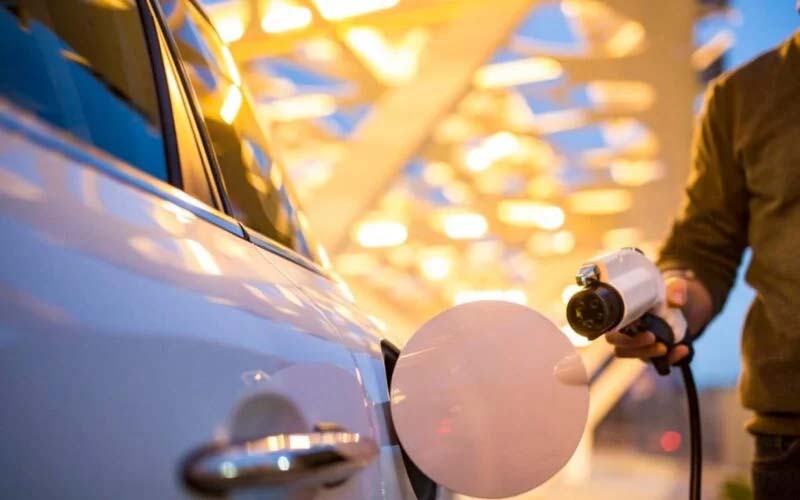Electric vehicle charging made simple. Electric vehicles are flooding the automotive market. All first-time EV buyers are transitioning from filling up at a gas station to essentially anywhere they can choose to charge at home or at an EV charging station. Here are some points to consider to get the most out of your expenses.
First, you need to choose a charging method that suits your daily needs. For short daily commutes, overnight charging at home will give you plenty of range. This is the cheapest and most popular method.
There’s also the option to charge on the go, for example, by plugging in your EV at a charging station while you’re at work or running errands. If you’re taking a longer road trip, planning your trip ahead of time is an important way to ensure your drive is fully charged.
Secondly, you need to learn more about technical aspects such as charging level, charging method, and AC/DC current. There are three charge levels, 1, 2 or 3. Each level differentiates the charging of the EV based on the voltage (i.e. the speed of energy transfer).
Knowing which charging speed, voltage, and type of plug and socket is best for your vehicle will help you get the best charge for your particular EV battery.
If you’re buying an EV for the first time, be sure to check to see if there are any local incentives that offer tax rebates, tax credits or discounts to help keep your upfront costs down.

Your everyday EV charging experience can be easy, easy, easy. Since EVs are still a relatively new concept, these few methods should help you make the transition to one. Here are 10 top EV charging tips, simplified to smooth out your EV experience and keep your drive alive!
1. Download Apps
As EV infrastructure improves and electric vehicles become even more common there will be plenty of charging options around to choose from. For now, it’s best to plan your route ahead of time. There are many free apps on the market such as PlugShare, Chargehub, Chargewayand BetterRoutePlanner.
These apps make your planning easy by allowing tailored route planning depending on the electric vehicle type you own. You can mark your distance and see available charging stations on the route. The apps will show if the charging stations are already being used and if they are actively functioning. So no wasted journey is made. With PlugShare you can even list your home charging station to other drivers in your area.
2. Carry a Portable Charger
It’s always good to have a backup option. Even with perfect planning, you must leave room for the unexpected! Portable chargers are a great way to ensure an extra top-up if needed. Portable chargers allow charging from household sockets—a cost-effective way to get a top-up charge from home, or after meeting at a friend’s.
3. Travel Outside of Peak Hours
Whenever possible travel outside of peak hours. You will tend to find fewer charging points available during these times. If you do find available charging points during peak hours you’ll be paying more since the cost of electricity is more expensive during these hours: 8-11 am, 4-10 pm.
4. Keep it Cool
You should always leave your electric vehicle parked in the shade when possible. High temperatures can be damaging to the electric car’s battery life over time. Similar to how your phone would react if left in the sun!
5. Join an EV Community Platform
One great way you can stay up to date with the latest EV news and trends is by joining a platform on your preferred social media. @EVChargeplus on Instagram is great for trends and up to date EV news.
Another great way to keep posted is by finding a discussion related thread on platforms such as Reddit or Facebook, to answer any questions you might have about your electric journey.
6. Look After Your Battery
This one sounds pretty obvious. But for the longevity of your vehicle it’s important you look after your Electric car battery. For instance, as a general rule, you shouldn’t leave your battery to drain before charging.
It is best to plan to recharge at 30%. It is also best for your battery life to keep maximum power at around 80%. However, most EV’s have a built in buffer to ensure you don’t overcharge, meaning when your charge says full it’s actually a little under. Lastly, limit your amount of fast charges. Sure, it’s fast but over time this can take away from battery life over time.
7. Safely Store your EV Charging Equipment
Store and protect your EV charging equipment. Store equipment such as car chargers and adapters safely in a protective casing, to keep them away from dust, debris, or any damp conditions. This is essential for not only the longevity of your EV and charging equipment, but also for safety.
8. Slow Down
Driving slower will conserve energy use from your battery. The faster you go, the faster you drain your EV’s battery. If you refrain from keeping your foot on the accelerator, over time you’ll increase your battery’s life.
9. Install an EV Charging Station at home
If you have the space, an EV charging station is a great investment. Home charging is the cheapest method of charge. Not only that but installing an electric car station at your home can add value to your property. When charging from home overnight, it’s essential to time your charge to make sure you don’t overcharge your EV.
10. Go Even Greener
Nowadays, you can purchase solar panels at pretty affordable prices. If installed on your roof and sized appropriately to provide for your EV charging and other household needs, you would save upwards of €1000 per year. Not to mention purchasing an electric car is already a great improvement on carbon footprint and using solar energy would make you much less reliant on nonrenewable energy.
Make the most of your electric journey with these EV charging tips. Cheers to a greener future and happy charging!
Start Your EV Charging Business With Kelylands Today!
Simply Fill Out Your Details And We’ll Give You A Call To Discuss The Right EV Chargers For Your Charging Needs.
